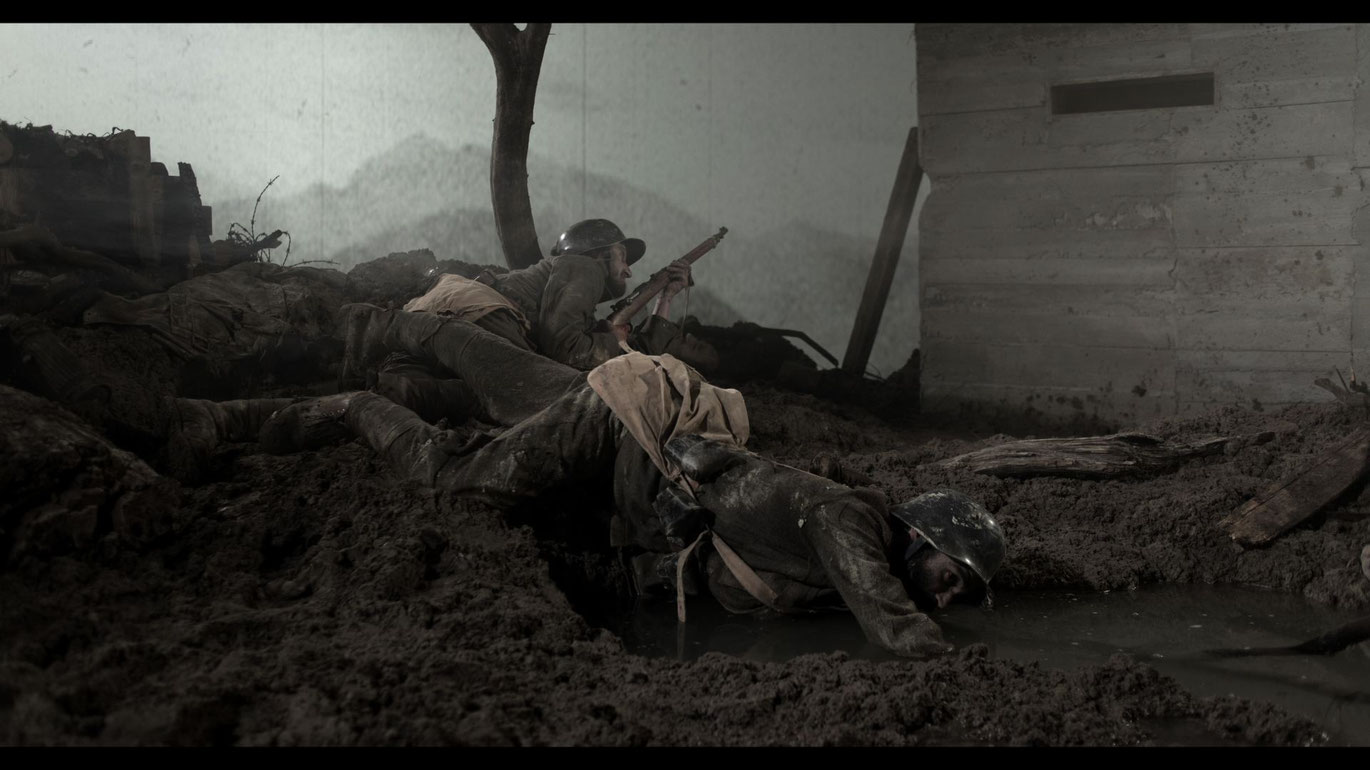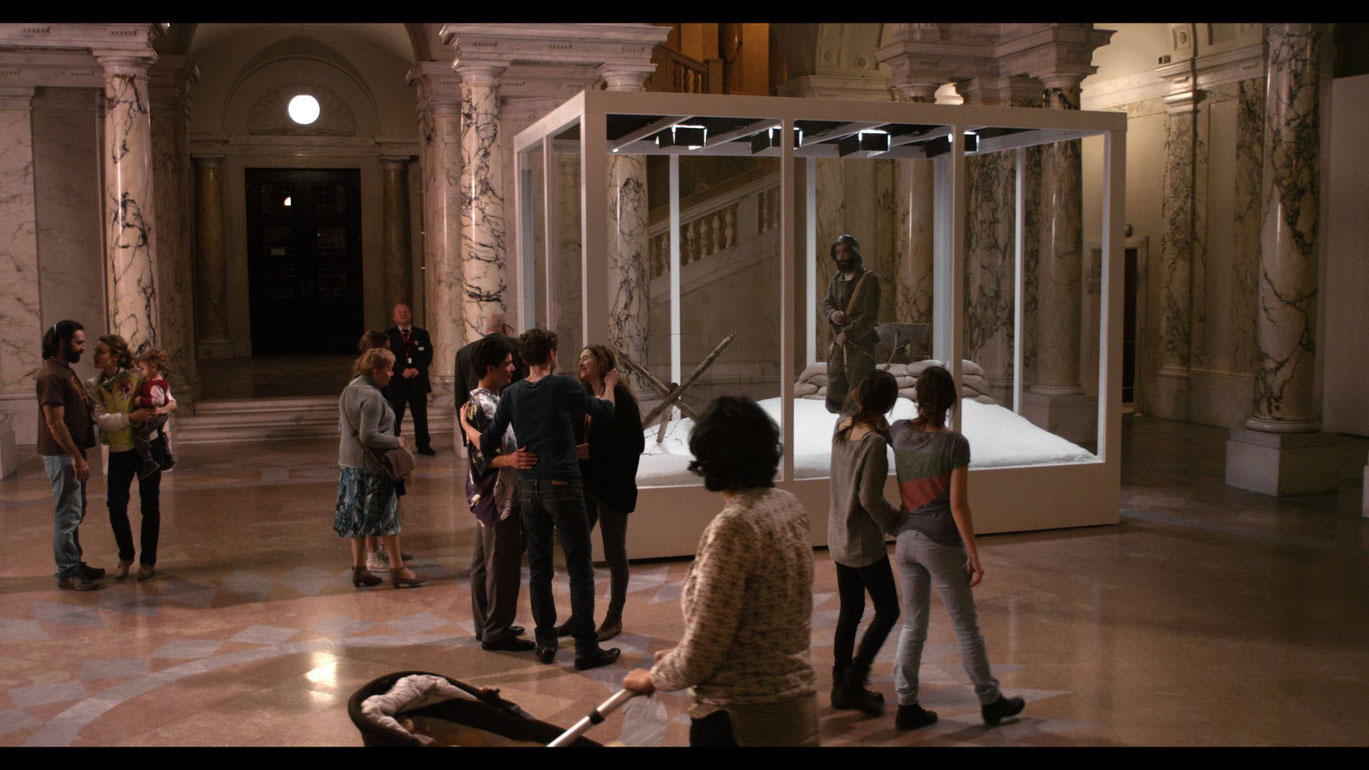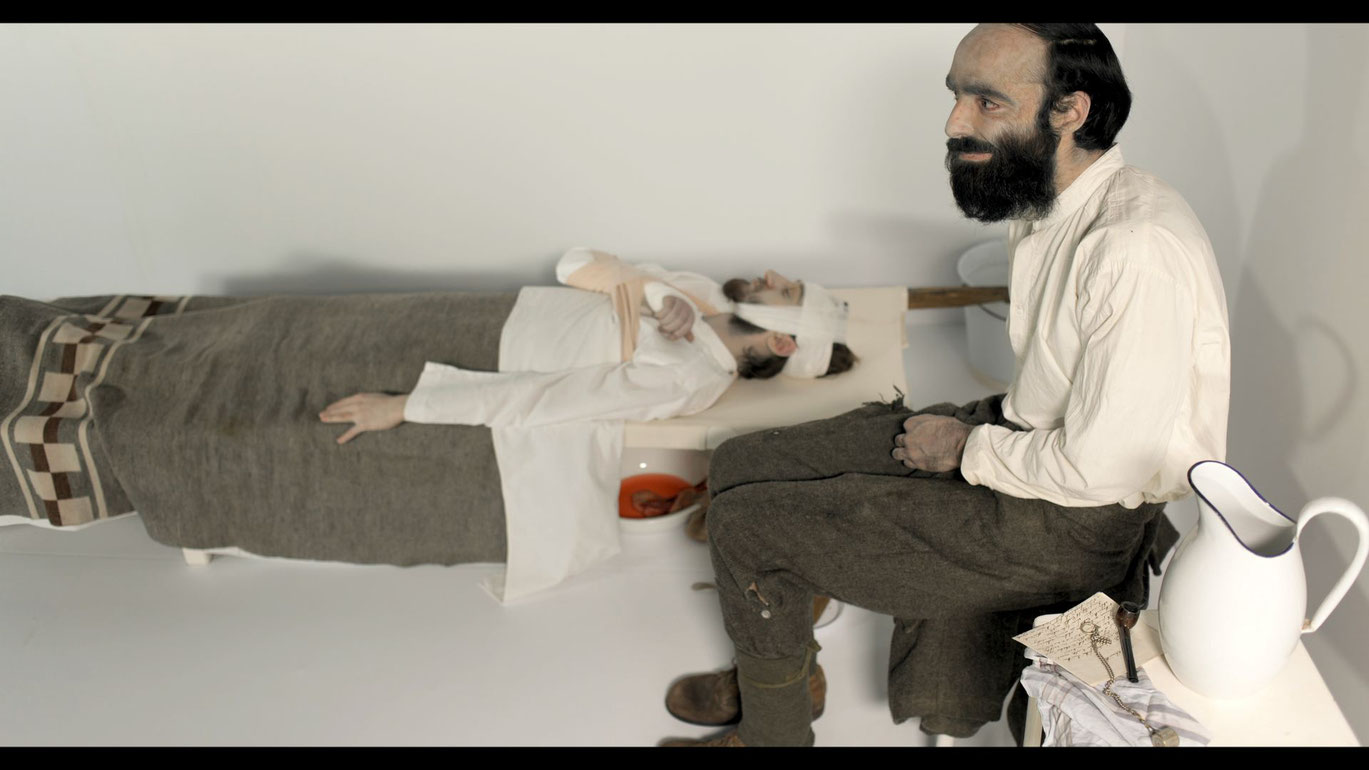Uncanny Valley
One paradox of images is that they hold back what they show, and keep at a distance, what they bring close. At the same time, the canvas or screen on which they appear seems like a shield offering protection from what is shown. As pictures, they guarantee a distance between the present of perception and the elsewhere of the recording. This seems even more applicable to a film such as Uncanny Valley, which deals with World War I - an event that is already beyond something that can be remembered, and now only plays out in historical memory. When it wants to be called to mind again, then as depiction—as representation, which in the image, can´t help but depict its distance to what is shown.
Paul Wenninger traces the arc of representational history to representation-critical parable: he straddles the Uncanny Valley with motifs from found footage material from World War I, which he connects to the actors´ performances, to bring them into the image again using techniques from animation and then, with a diorama, to land in a museum-like ambiance. What the film documents is a parable about the difficulty of making present what one wants to show: in this film, the soldiers´ fear and wounds also applies to the distance, which is injured here, in order to gapingly gaze in the semblance of illusion. The stop-motion aesthetics jiggles at the seamless course of images, making the representation stutter: the body language follows the media´s staccato, which intrudes in the dance to perforate the movements, punch holes through the appearance of humanity. What is then shown is a distance, which affects us deeply, the impossibility of backing away, an iconoclastic dance. (Andreas Spiegl)
Translation: Lisa Rosenblatt
In Uncanny Valley, we are at once bombarded by the psychological and physical intensity of a battle fought between desperate soldiers during the First World War. Within the horizon of a physiological apparatus and a gaze towards war, Uncanny Valley develops a dramaturgy of the image interrupted, a stuttering picture that interrupts the narrative structure of the scenic sequence. Each frame of this animated live action piece reveals its own painful yet detailed moment, resistant to the synthetic image of history. The culminating effect of the narrative performance reveals numbing futility of war, the agony of conflict and survival, the discovery of brotherhood, and madness of it all. (production note)
Uncanny Valley
2015
Austria, France
13 min 30 sec



